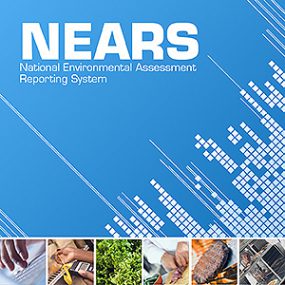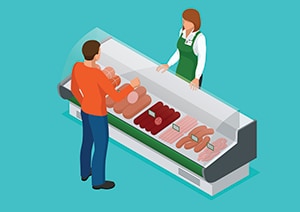September Is National Food Safety Month
Celebrate National Food Safety Month with these resources for food safety programs! Find information on food safety training, reporting, and research, along with new resources from other CDC colleagues and partners.
Take EATS 102: CDC’s latest course for investigating foodborne illness outbreaks
The skills needed to investigate outbreaks of foodborne illness are different from those needed to inspect restaurants. EATS 101 and 102 address environmental assessments and the critical role of environmental health staff. With EATS 102, you can practice applying environmental assessment skills in multiple outbreak scenarios.
Read our column on EATS in the September issue of Journal of Environmental Health.
What Are the Benefits of EATS?
It’s free and available anytime: Take the courses at your own pace in this online learning program.
It’s practical: Learn how to identify an outbreak’s environmental causes, recommend appropriate control measures, and practice conducting virtual environmental assessments.
You can earn continuing education units (CEUs) from CDC after completing the courses and final evaluation (optional).
Sign up for NEARS: CDC’s National Environmental Assessment Reporting System
NEARS captures environmental assessment data from foodborne illness outbreak investigations to help prevent outbreaks associated with
restaurants and other food venues. You can access and use your NEARS data at any time to
- Identify environmental causes of outbreaks in your jurisdiction.
- Evaluate and improve your food safety program based on established guidelines.
- Focus limited program resources on actions with the highest impact.
- Help your program meet the Food and Drug Administration’s Retail Food Program Standards.

How Can I Learn More About NEARS?
Spend an hour getting to know this surveillance system with an on-demand NEARS webinar.
Explore our summary reports for information on characteristics of previous outbreaks and the establishments where the outbreaks occurred.
Check our participant map to see if your jurisdiction is registered.
Learn More about Our New Studies on Retail Deli Practices
Reduce the risk of Listeria monocytogenes (Lm) and other germs that cause foodborne illness and outbreaks. Explore our new studies on retail deli practices.

- Most delis keep food cold enough to reduce growth of Lm and other germs that cause foodborne illness and outbreaks, but 1 in 6 delis do not. We recommend food safety programs and delis
- Encourage or require kitchen managers to be certified in food safety.
- Monitor and record refrigerator temperatures.
- Most delis inspect their slicers, but only 1 in 4 reported inspecting their slicers as often as recommended. We recommend food safety programs and delis
- Ensure delis have trained and knowledgeable staff.
- Focus interventions on independent and smaller delis.
Want More?
Check out more of our food safety resources for environmental health professionals, including infographics.
Explore more CDC resources, including
- Information on the risk of foodborne illness and steps people can take to protect their health.
- Videos of groups at higher risk for food poisoning and severe symptoms that should lead to a doctor’s visit.
- Information for health departments as it relates to their role in outbreak investigations.
- A new paper on foodborne norovirus outbreaks associated with food contaminated by infected food workers.
Find tools from our partners:
- Food safety resources for local health departments[PDF – 505 KB] (National Association of County and City Health Officials, NACCHO)
- Food safety credentials (National Environmental Health Association, NEHA)
- Food Trucks: Ensuring Safety During Rapid Growth (NEHA)
- Guideline on Minimizing the Risk of Campylobacter and Salmonella Illnesses Associated with Chicken Liver[PDF – 316 KB] (U.S. Department of Agriculture Food Service and Inspection Service)
- Highlights for Food Safety Month (NEHA)
- Retail Food Program Standards Mentorship Program[PDF – 1 MB] and blog series (NACCHO)























.png)











No hay comentarios:
Publicar un comentario